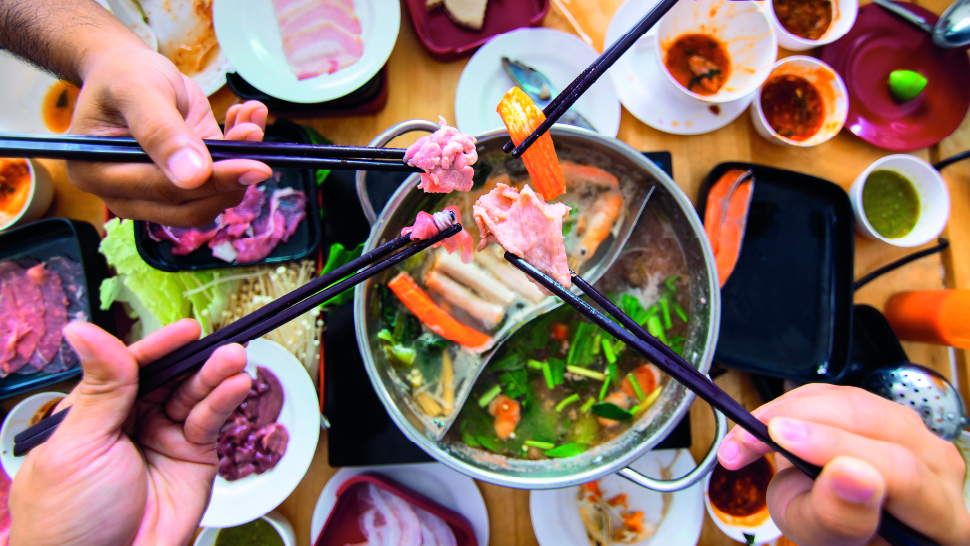How Japanese American Blogger Amy Kimoto-Kahn Honors Her Cultural Heritage Through Food
- by bonappetit

In this Q&A, we speak with Amy Kimoto-Kahn, a Japanese American blogger, personal chef, and author of two cookbooks, Simply Ramen and The Asian Hot Pot Cookbook, about her cultural heritage and the family food traditions that she holds dear. We delve into her love for Japanese cuisine and how she passes down her food culture to her children, while also exploring the impact of her family’s internment during WWII on her identity and appreciation for resilience and perseverance in the Japanese community in the United States.
First things first, could you tell us a bit about yourself?
I’m a wife, a mom of three kids, a personal chef and author of two cookbooks. I love to travel with my husband and family, try new places to eat and visit farmers’ markets wherever we go. Food is always at the center of our adventures. I’m also an avid fisherwoman, a pretty good pianist, and I love to host parties.
The AAPI community is so large and diverse, and we want to shine a light on the ways different cultures have developed in the United States. Can you share a bit about your cultural heritage?
Our cultural heritage stems from a strong family unit where you respect your elders, you place great importance on education and hard work as a measure of success and you value food, its presentation and use of seasonal ingredients in everyday life whether it be for a casual family meal or more formal.
Being a fourth-generation Japanese American means that my family has been living in the United States for four generations. Although this seems like my cultural heritage with Japan might be diluted, our Japanese traditions and culture were carried throughout the generations. It is alarming though, that even though we have been in the US for so long, that my parents and their families were interned in concentration camps during WWII for suspicion of being spies. I consider myself American first but very strongly rooted in my Japanese culture.
What do you think defines Japanese cuisine?
Japan’s cuisine is beautifully varied by its landscape, climate, and seasons. Served best in its pure form with minimal seasoning or sauces. Western culture is familiar with traditional Japanese dishes like sushi, ramen, tempura, teriyaki, sukiyaki, and hibachi, but the diversity of food originating from many of the smaller prefectures is what makes Japanese food so colorful and interesting. Dishes like okonomiyaki (a pancake made with thinly sliced cabbage, flour, and eggs mixed with seafood or meat) or other types of noodle dishes like soba and udon, both made with buckwheat flour, are becoming more well known, which is nice to see.
What are some meaningful cultural traditions of your family?
We celebrate Japanese holidays where food is the centerpiece, like Japanese New Year’s. We make traditional dishes like sushi, sashimi, kamaboko (fish cakes), kuromame (sweetened black soybeans), kinpira gobo (simmered burdock root), kurikinton (sweet potato and chestnut) and osechi (boiled seaweed). We make fresh mochi every Christmas with my entire family and always have Ozoni soup on New Year’s Day. My mom always taught me to cook with my senses, making every meal not only look visually appealing but taste delicious as well.
How do you pass down your culture and customs to your children?
I try to continue to celebrate the Japanese holidays with my children and make sure they participate in things like mochi making, learning the Japanese terms for different foods, trying all types of Japanese food, having them be my guinea pigs for many of my recipes for my cookbooks and having them help me in the kitchen to learn more about Japanese food preparation. We do visit the Buddhist temple in Los Angeles where my father has a memorial, so they are familiar with Buddhist chanting and the traditions that go along with honoring those who have passed.
How did you come to appreciate your own culture while growing up in the United States?
My mom cooked Japanese food quite often and we always had steamy, fluffy Japanese rice in a rice cooker at the ready – whether it was spaghetti and meatballs or chicken teriyaki, we always had rice on the side. My parents continued to celebrate some of the Japanese holidays with us like Boys and Girls Day and Japanese New Year’s. My late father was Buddhist, so we often went to festivals that celebrated Japanese culture, music and food. Growing up, my mom had a group of Japanese women friends that called themselves “The Dames”. These were my nonblood related “aunties” and they were the Martha Stewarts of their time. They hosted elaborate gourmet evenings and when my mom hosted, my siblings and I helped prepare, serve and clean.
The reason why my mom formed her own group of Japanese women (“The Dames”) was because after the war, she was not allowed to join a sorority when she attended USC. I think it’s wonderful that out of adversity, they were able to make their own club that taught me so much and allowed them to pass on their legacy of cooking and hosting with the rest of the world in their cookbook and through their children. It was an embarrassing time in U.S. history, but it has taught my family the meaning of resilience, hard work, ambition, persistence, perseverance and pride in our culture for handling racism with such grace.
This is where I learned all about Japanese cooking as well as how to be an elegant host. They have their own cookbook that is sold at the Japan American Museum in Los Angeles and was my inspiration to also have my own cookbook.